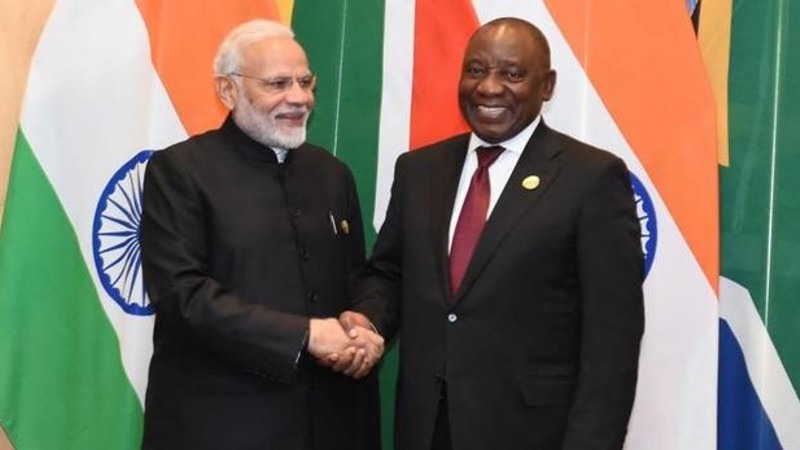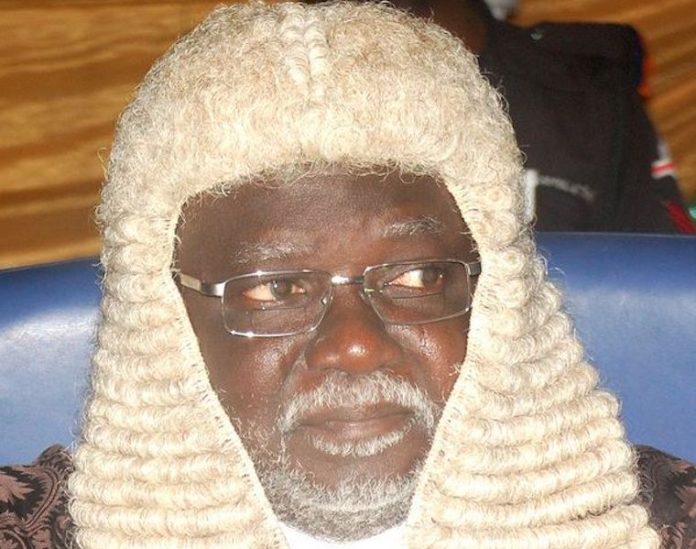By Paul Ejime
Politically speaking, India is the World’s largest democracy with a voter population of 969 million from the more than 1.4 billion inhabitants. It towers above South Africa, which has less than 62 million people, and about 28 million registered voters.
The Asian giant is also the World’s fifth-largest economy, while Africa’s “Rainbow Nation,” ranks a distant 36th.
However, both countries share much in common in international relations, particularly as members of the geopolitical bloc BRICS, formed in 2009 and includes Brazil, Russia, India and China, seeking to provide alternative global economic leadership.
The two countries now share similar outcomes in their 2024 elections.
The Black-majority African National Congress (ANC) in South Africa has lost its parliamentary majority for the first time in 30 years since the 1994 multi-racial elections ended decades of the apartheid era.
The country of the late world-renowned Nelson Mandela is now preparing for a new phase in its political history, with the ANC requiring an alliance with rival parties to form a government.
This is just as the failure to win a national majority by Prime Minister Narendra Modi’s Bharatiya Janata Party (BJP), signals a dramatic shift in the political landscape of India, which it dominated in the past decade in the country of another World icon Mahatma Gandhi
The implications of South Africa’s 2024 electoral experience have been treated extensively in a previous article South Africa’s 2024 Election, A Referendum on Black Leadership – Paul Ejime Media.
There might be differences in context and domestic peculiarities in Indian and South African politics, yet the lessons from their 2024 elections are instructive.
Incidentally, the late Gandhi lived in South Africa for 21 years before returning to India in 1915 at age 45 to launch his well-documented activism and political career dominated by his leadership of the Indian National Congress, a forerunner to the main opposition party in the Asian country today.
India also has much to show in its chequered political history as a resilient democracy. For instance, in 2024, the country set a record of 642 million votes despite a deadly heatwave that killed at least 200 people, including dozens of poll workers and a farmers’ strike.
It is hardly surprising that the country’s seven-phase elections are the most expensive in the world with votes cast electronically from the high peaks of the Himalayas to the remote forests and with electoral rules specifying that there must be a polling station within two kilometres of every habitation, which means over a million polling stations nationwide.
India’s electoral system also permits postal votes mainly for military personnel serving outside their home constituencies or officials away from home on election duty.
This year, the postal votes were extended to voters over 85 years of age and to people with disabilities, to allow them to vote from home, with balloting held over several weeks, from 19 April to 1st June.
Modi will be sworn in this weekend for a third consecutive term. His BJP clinched 240 seats this time which is below the constitutional benchmark of 272 from the 543-seat parliament and will now rely on the National Democratic Alliance (NDA) Coalition to form a government.
This contrasts with BJP’s landslide victories in 2009 and 2014.
The opposition National Congress-led INDI Alliance secured 99 seats, springing some surprises to better their performances in 2009 and 2014.
The Modi-led government has endured criticisms for muzzling the critical media, eroding judicial independence, and using government agencies to jail and intimidate political opponents.
Delhi’s Chief Minister Arvind Kejriwal was among the high-profile figures of the opposition Aam Admi Party (AAP) arrested on allegations of corruption, a month before the 2024 elections, while the BJP had also been embroiled in controversy over political funding through electoral bonds now ruled unconstitutional by the Supreme Court.
Indian farmers, especially from Punjab, also took to the streets in February 2024 in an anti-government protest for the second time, demanding higher guaranteed prices for their produce in a country that ranks second behind China in the World farm output.
While the protest petered off within weeks, Modi’s second term also kicked off with the inauguration of the grand Ram Temple in Ayodhya, fulfilling a decades-old promise made by the Hindu Nationalist Party and consolidating the party’s Hindu vote base.
Despite being the World’s fifth-largest economy with about an 8% growth rate, unemployment and inflation are some of the major challenges facing the large Asian country.
Modi’s popularity at home may be unchallenged due to the 2024 vote outcome but upsets for the BJP were from India’s Hindi heartland, particularly the populous and politically crucial State of Uttar Pradesh which was considered the ruling party’s stronghold.
“We have created a World record of 642 million proud Indian voters. This is a historic moment,” declared Chief Election Commissioner Rajiv Kumar.
The BJP also remains the largest party in the Indian parliament. However, while the 2024 voter turnout represents a higher figure than the 612 million voters in 2019, analysts have also noted that the figure is about one percentage point lower as a proportion of the population than the 67.4% turnout recorded five years ago.
The ruling party had campaigned with the slogan, “Abki baar, 400 paar” (This time, more than 400) seats for its alliance, while exit polls had predicted that the BJP would better its 2019 score of 303 seats, but this did not happen.
The results of the 2024 elections in India and South Africa represent a victory for democracy. They are also a wake-up call to ruling and opposition parties, that credible elections are an effective tool available to the electorate to determine the fate of politicians and a barometer for measuring good governance/leadership.
*Paul Ejime is a Global Affairs Analyst and Consultant on Peace & Security and Governance Communications
![]()








